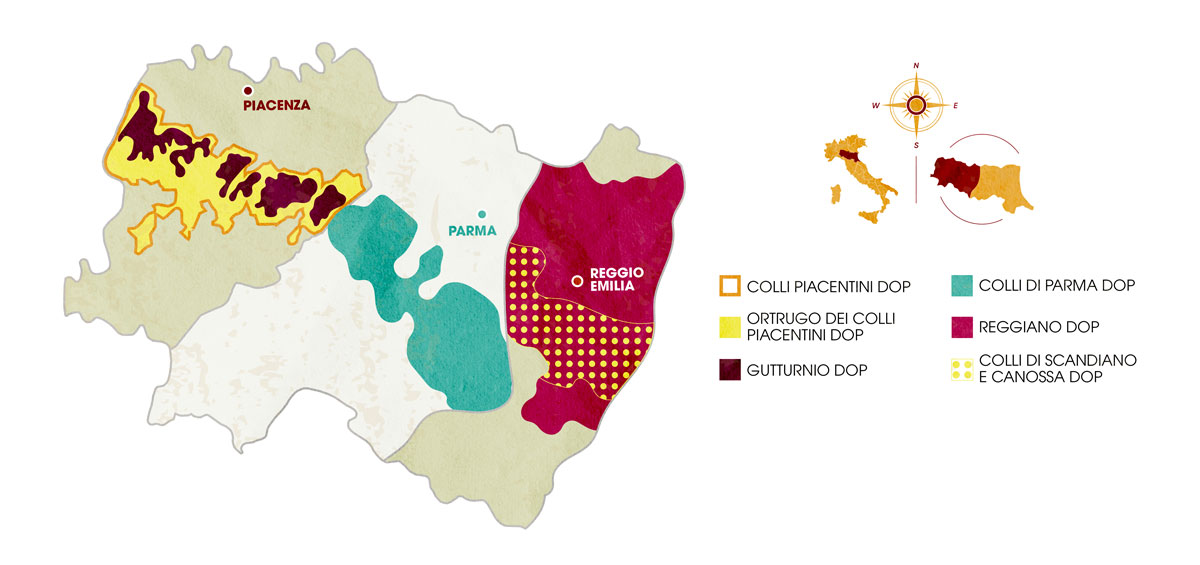Traditionally produced in the sparkling variety, it takes its name from the native vine and is one of the most widespread white grape wines in the Piacenza Hills. Ortrugo can also be sparkling, while the still version is very rare.
Always cultivated and used as a blending grape, it was only in the seventies that it began to be vinified in purity, quickly becoming the most widespread white. The first mentions date back to 1818, cited as “altruga”, a dialectal expression meaning “other grape”, precisely because it is traditionally vinified together with other vines.
With a delicate aroma, it is a drinkable wine that goes well with the local gastronomy; it is excellent as an aperitif or as a wine throughout the meal, it goes well with light starters, dry pasta and risottos with sauces and vegetables.


